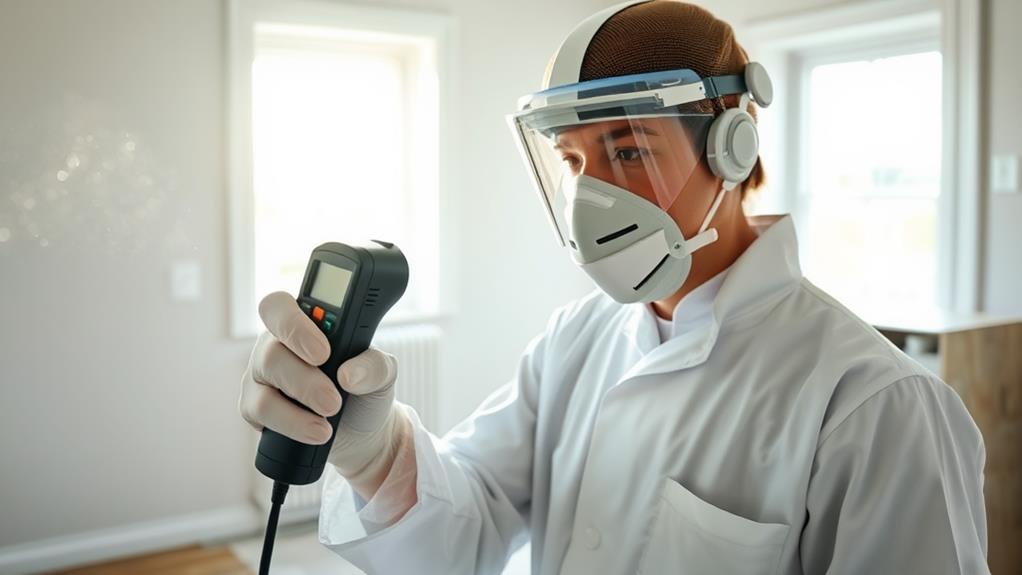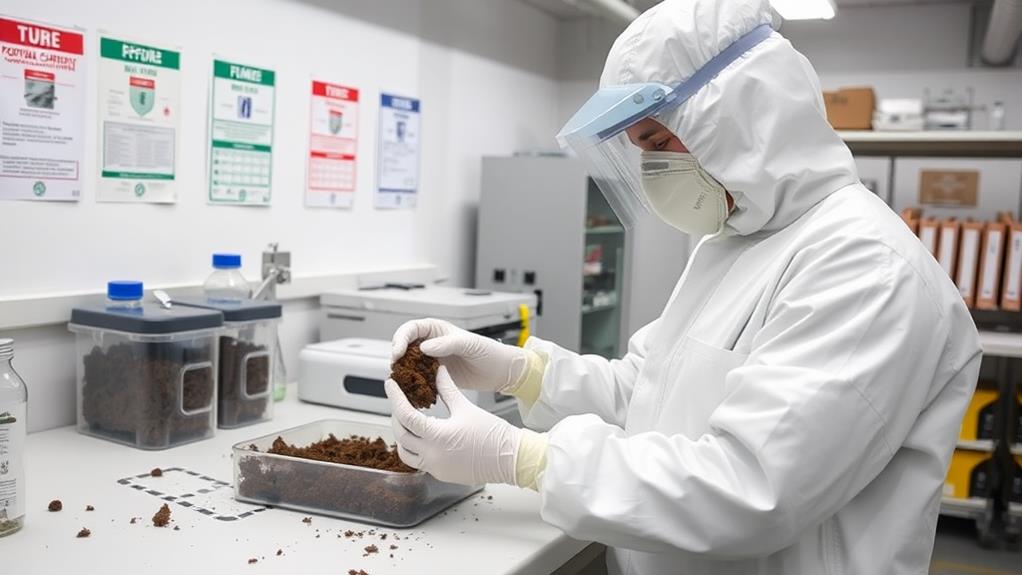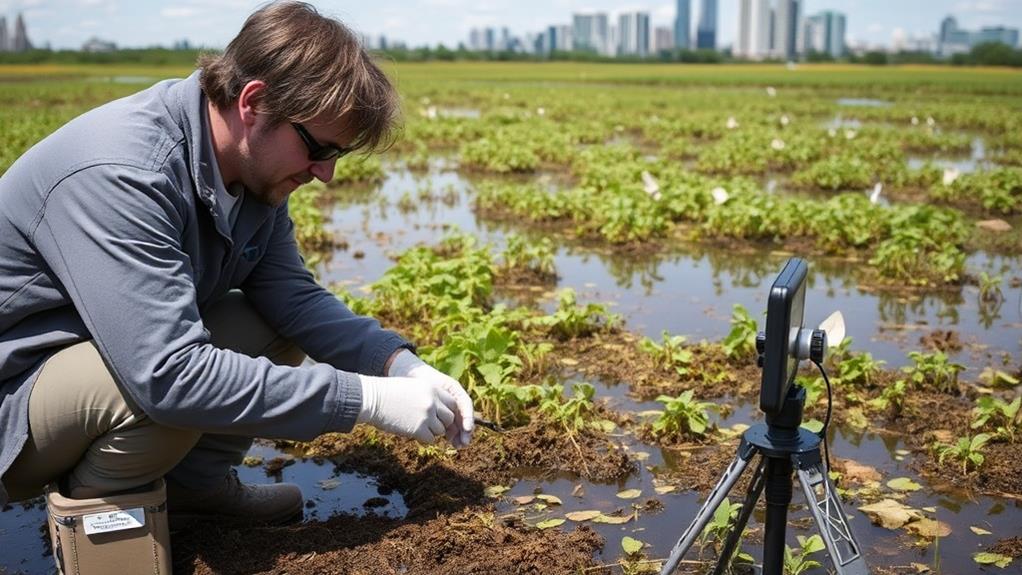Post-remediation testing and inspection are crucial for ensuring the success of environmental cleanup efforts. These processes verify that hazardous materials have been effectively removed or neutralized, protecting public health and safety. Comprehensive assessments include visual inspections, air quality testing, and surface sampling to evaluate contamination levels. Regulatory compliance is achieved through adherence to specific protocols and detailed documentation. Thorough testing is cost-effective, preventing future health hazards and additional remediation expenses. Long-term site management considerations, including ongoing monitoring and maintenance, are essential for continued effectiveness. By prioritizing post-remediation testing and inspection, stakeholders can ensure the safety and compliance of remediated sites while minimizing long-term risks and costs.
Ensuring Remediation Goals Are Met

Verification is the cornerstone of successful post-remediation testing and inspection. This crucial step ensures that the remediation efforts have effectively addressed the identified issues and met the established goals.
Post-remediation testing involves a comprehensive evaluation of the treated area using various methods and tools to confirm that contaminants or hazards have been eliminated or reduced to acceptable levels.
The process typically includes visual inspections, air quality testing, surface sampling, and moisture measurements. These assessments are conducted by qualified professionals who compare the results to predetermined standards and regulatory requirements. The data collected is analyzed to determine if the remediation objectives have been achieved or if additional work is necessary.
In cases where remediation goals are not met, further investigation and corrective actions may be required. This iterative process continues until all benchmarks are satisfied. Proper documentation of the testing procedures, results, and any follow-up actions is essential for maintaining transparency and demonstrating compliance with relevant regulations.
Ultimately, thorough post-remediation testing and inspection provide assurance to stakeholders that the remediation project has been completed successfully and the affected area is safe for occupancy or use.
Protecting Public Health and Safety
The primary objective of post-remediation testing and inspection is to protect public health and safety. These processes ensure that contaminated sites or structures have been effectively cleaned and pose no further risk to the surrounding community. By conducting thorough assessments after remediation efforts, experts can verify that hazardous materials have been removed or neutralized to acceptable levels.
Post-remediation testing involves collecting and analyzing samples from various environmental media, such as soil, water, and air. These samples are evaluated for the presence of contaminants, ensuring they fall below established regulatory thresholds. Inspection procedures include visual examinations, documentation reviews, and interviews with remediation personnel to confirm that all necessary steps were taken during the cleanup process.
The results of these tests and inspections are crucial for determining whether a site is safe for reoccupation or redevelopment. They provide assurance to regulatory agencies, property owners, and the public that potential health risks have been adequately addressed. Additionally, these processes help identify any remaining issues that may require further attention, preventing future exposure to harmful substances and safeguarding long-term community well-being.
Regulatory Compliance and Documentation

How does regulatory compliance fit into post-remediation testing and inspection? It plays a crucial role in ensuring that all remediation efforts meet legal and industry standards. Regulatory bodies establish guidelines for acceptable contaminant levels, testing procedures, and documentation requirements. Adhering to these regulations is essential for protecting public health, avoiding legal liabilities, and maintaining professional credibility.
Post-remediation testing and inspection must be conducted in accordance with specific protocols set by regulatory agencies. This includes using approved testing methods, maintaining chain of custody for samples, and employing certified professionals to perform inspections.
Documentation is a key component of regulatory compliance, requiring detailed records of all remediation activities, test results, and inspection findings. Proper documentation serves multiple purposes: it demonstrates compliance with regulations, provides a clear history of the remediation process, and can be crucial in legal situations. It also assists in future property transactions by offering a comprehensive record of environmental conditions.
Regulatory compliance in post-remediation testing and inspection ultimately ensures that remediation efforts are thorough, effective, and meet all necessary standards for public safety and environmental protection.
Cost-Effectiveness of Thorough Testing
Balancing the costs of thorough testing against potential long-term risks is a critical consideration in post-remediation procedures. While comprehensive testing may initially appear expensive, it often proves to be a cost-effective strategy in the long run. Thorough post-remediation testing helps identify any remaining contamination or incomplete remediation, preventing future health hazards and additional remediation costs.
The expenses associated with inadequate testing can far outweigh the initial investment in comprehensive assessments. These potential costs include repeated remediation efforts, legal liabilities, decreased property value, and ongoing health issues for occupants. Moreover, thorough testing provides documentation that can protect property owners from future claims and demonstrate due diligence to regulatory bodies.
Implementing a strategic testing plan can optimize cost-effectiveness. This may involve prioritizing high-risk areas, utilizing a combination of testing methods, and engaging qualified professionals to interpret results accurately. By adopting a proactive approach to post-remediation testing, stakeholders can minimize long-term financial risks while ensuring the safety and integrity of the
Long-Term Site Management Considerations

Sustainability of remediation efforts hinges on effective long-term site management. After initial post-remediation testing and inspection, ongoing monitoring and maintenance are crucial to ensure the continued effectiveness of cleanup measures. This involves regular site assessments, groundwater sampling, and soil testing to detect any potential recontamination or emerging issues.
Long-term management plans should include provisions for periodic review of remediation goals, adaptation to changing environmental conditions, and updates to risk assessments. Incorporating adaptive management strategies allows for flexibility in response to new information or technologies. Establishing clear protocols for data collection, analysis, and reporting ensures consistent evaluation of site conditions over time.
Financial planning for long-term site management is essential. This includes budgeting for ongoing monitoring, potential future remediation needs, and maintenance of engineering controls. Stakeholder engagement and clear communication channels are vital for addressing community concerns and maintaining transparency throughout the long-term management process. Additionally, proper documentation and record-keeping are critical for regulatory compliance and future land use decisions. By implementing comprehensive long-term site management strategies, organizations can protect remediation investments and minimize environmental and health risks over extended periods.
Frequently Asked Questions
How Long Does Post-Remediation Testing Typically Take?
Post-remediation testing duration varies depending on the project's scope and complexity. Typically, it can take anywhere from a few hours to several days. Factors influencing the timeline include the size of the affected area and testing methods employed.
Can Post-Remediation Testing Be Performed by the Same Company That Did Remediation?
Like a referee ensuring fair play, post-remediation testing should ideally be performed by an independent third party. While some companies offer both services, it's generally recommended to separate remediation and testing for unbiased results and quality assurance.
What Qualifications Should a Post-Remediation Testing Professional Have?
A post-remediation testing professional should possess relevant certifications, such as IICRC or ACAC, extensive experience in environmental assessment, knowledge of industry standards, and proficiency in various testing methods. They should also maintain ongoing education and stay updated on regulations.
Are There Different Testing Methods for Various Types of Contamination?
Yes, different contamination types require specific testing methods. For mold, air and surface sampling are common. Water damage may involve moisture meters. Asbestos testing uses microscopy. Lead detection employs XRF analyzers or lab analysis of collected samples.
How Often Should Post-Remediation Testing Be Repeated After Initial Clearance?
Like a vigilant sentinel, post-remediation testing frequency depends on various factors. Typically, after initial clearance, annual or biennial testing is recommended. However, more frequent assessments may be necessary for high-risk environments or if new issues arise.
Conclusion
Post-remediation testing and inspection are critical for verifying remediation effectiveness, safeguarding public health, ensuring regulatory compliance, and optimizing long-term site management. Thorough testing proves cost-effective by preventing future contamination issues. Interestingly, a study by the Environmental Protection Agency found that 25% of remediated sites required additional cleanup efforts due to inadequate post-remediation testing. This statistic underscores the importance of comprehensive testing protocols to achieve successful and lasting environmental restoration, protect communities, and minimize long-term liabilities for stakeholders involved in remediation projects.

